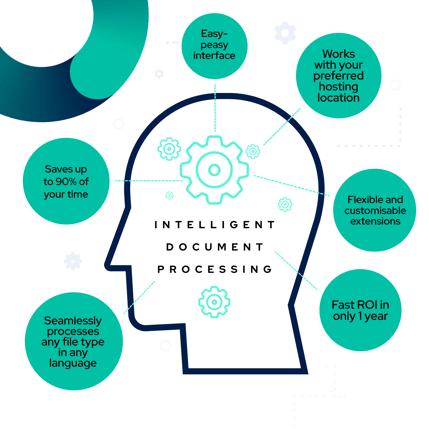Data serves as the foundation for any business' success: fact.
The International Data Center (IDC) expects that the global data sphere will grow by 163 zettabytes by 2025. To put that into perspective, that is approximately 163 trillion gigabytes or ten times greater than the amount recorded in 2016. More than ever, businesses face challenges related to growth and sustainability for the exact reason they struggle to handle their data. After all, unless you have a team of robots, how could you possibly collect, clean, and put together all your data ready to analyse and use?
Image credit to Nasa | Unsplash
It's a lot to deal with, but thankfully, technology is evolving.
This is where automated data extraction comes to the rescue.
What is automated data extraction?
Automated data extraction is the process of uploading, handling, and processing data from documents via automated technology, instead of manually performing all of these tasks.
Acodis defines the stages of data automation in three simple steps:
- Extract data from one or more documents.
- Transform it into the required format of the data's destination by applying pre-processing systems and filters.
- Process the data to check for errors and send it to its final destination (such as a database or data warehouse).
Automating these processes saves not only time and money but also improves business efficiency. Furthermore, it can reduce errors through data validation stages and ensure that data is loaded in a seamless machine-readable format. This is crucial for enhancing business insights and gives companies a boost to progress in the right direction.
As companies continuously grow, so do their databases, and this is why automated systems are inevitably going to remain loved in the business world.
A better, sustainable way to automate data extraction
Intelligent Document Processing (IDP)!
Using IDP, document data extraction can be automated appropriately with the right blend of human interaction that monitors the accuracy and the machine learning element that manages the automation.
We're not just talking about Robotic Process Automation (RPA) here; we're talking about technology that goes beyond merely scraping the data - it structures the documents' data so it can be tracked, cross-checked or verified against internal data.
Is it a keeper?
In short: yes.
For some time, there have long been tools available to scrape data from websites and other systems. However, these tools aren't very intelligent and can cause more problems than they solve.
We have all been longing for a solution that actually helps us in the long run!
Data extraction systems like IDP offer new incentives for a business that isn't possible (or at least difficult to achieve) without it. Like many innovative solutions birthed from technology, it is a productive and cost-efficient method for any type/size of business to adopt. And while countless benefits directly affect companies themselves, the reason IDP is in for the long run is that it directly benefits employees.
The flexibility of data extraction systems like IDP is also a great bonus. The world of business is forever evolving, expanding, shifting - and using technology that can handle these constant fluctuations will certainly be sustainable.
Will humans and data extraction tech coincide?
Whilst there are valid examples of where automation has the ability to replace a human from their role, systems like IDP are a perfect example where humans and tech work well together.
Many people speculate that data extraction technology pushes the human out of the picture, but in fact, it is quite the opposite. IDP works even better with human-in-the-loop, as we are able to monitor how accurate outputs are and manually feed it information.
This is another reason why automated data extraction like IDP will last: because it still needs humans to function. While we enjoy daydreaming about having everything automated and done for us, the reality is, we all need a line of work - and IDP ensures a level of sustained security of people's jobs.
What to take from this:
Well, it is evident that automated data extraction is going to stick around. When there is a need for data, there will be a need for IDP. As the IDC put quite clearly, more than 20% of global data will not only be essential to our livelihood, but critical.






